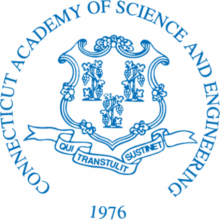While a typical kindergartener struggles with adding together two apples and three apples, Ronald Coifman, a most precocious preschooler, was “interrogating his elders” in order to understand multiplication facts, assiduously paving the way for his ascent to Computational Harmonic Analysis, a process that makes it possible to “extract information from complex patterns.” Dr. Coifman, best known for his work on wavelet packets—a mathematical shorthand for compressing and restoring images and sound—is a professor at Yale University. He is a member of the National Academy of Sciences and the American Academy of Arts and Sciences. He received the DARPA Sustained Excellence Award in 1996, as well as the Connecticut Medal of Science. He received the 1999 Pioneer Award from the International Society for Industrial and Applied Mathematics, and the 1999 National Medal of Science.
Dr. Coifman grew up in Tel Aviv. His parents were multi-lingual: his father spoke ten languages, and his mother was fluent in six. Because of the diverse population of newly developing Israel, Ronald was exposed to several different languages being spoken among his parents and neighbors all in a day. Since Dr. Coifman perceives math as a linguistic entity, complete with patterns and structures, his early exposure and facility to think in many different languages became a fundamental building block for his work, helping him extract information and transcribe that information into a mathematical language that he would later use to represent digital files.
His father was a chemical engineer and a “prolific inventor” who served as his mentor, engaging young Ronald in “extensive discussions on science and technology.” His father however, was not the only one to inspire him. Dr. Coifman recalls that the best teacher he ever had was his high school math teacher, Dr. Marshak, whom he credits with teaching him how to read. How to read? Of course, Ronald knew how to read in high school, but according to Dr. Coifman, what is too often assumed to be reading is merely skimming pages for content. What Dr. Marshak taught him was not how to simply read the words printed on a page, but how to systematically analyze mathematical constructs and question his understanding before progressing to the next level of complexity.
Dr. Coifman continued his education in Switzerland at the University of Geneva, majoring in mathematics and physics. He earned his PhD from the University of Geneva in 1965. Dr. Coifman states, “My work enables efficient representations of digital files, such as images, music, or scientific data. Various compression algorithms now in use such as JPEG or MPEG for image and video files are based on these methods. In our age, the ability to make sense out of massive digital data sets, whether medical data for diagnostics, or economic data for planning, or web documents is essential. Computational Harmonic Analysis is a basic component to enable this progress.” Currently, Dr. Coifman is working on projects to understand the mechanisms of learning, both machine and biological. He notes that some rudimentary but powerful mathematical foundations for such processes exist and can be used to organize and extract knowledge from vast digital data from medical to musical.
Dr. Coifman would like to impress upon young people that “mathematics permeates every activity in the information age. Just as it is essential to understand basic aspects of the law to survive and navigate the shoals of commerce, it is just as important to be proficient in the basics of mathematical thinking and organization. It is not difficult, but like a sport activity, it requires serious effort and training.”


